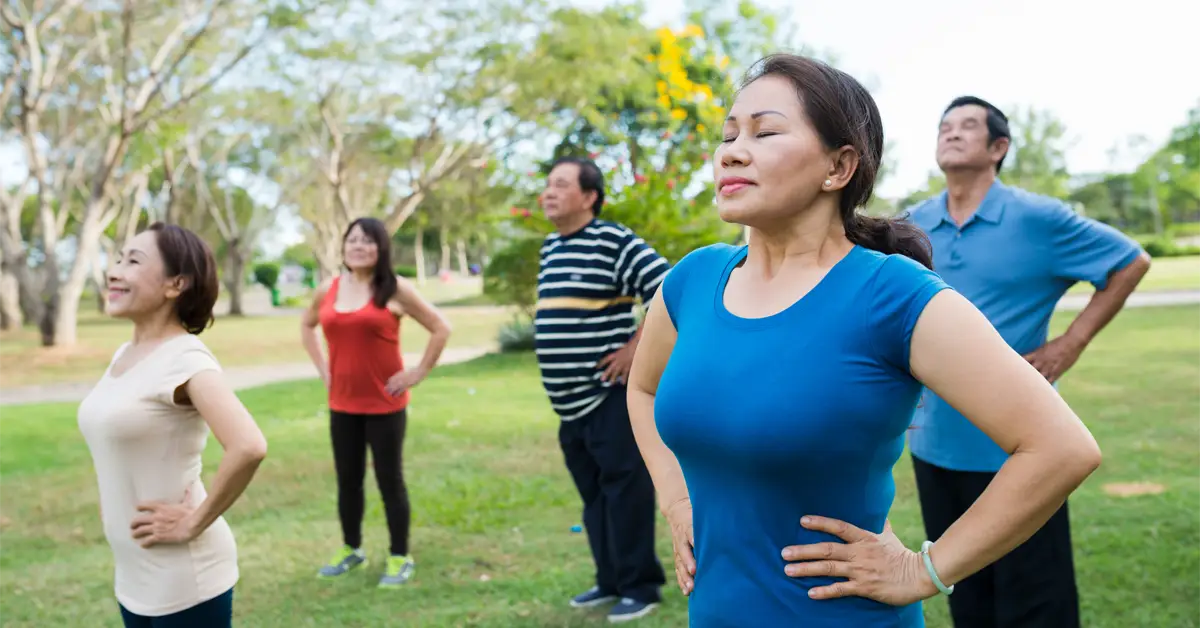Breathing is a fundamental aspect of human life, and it can be a constant challenge for those who struggle with pulmonary disease. Pulmonary rehabilitation is a comprehensive program designed to help individuals with chronic lung diseases, such as COPD and pulmonary fibrosis, breathe easier and improve their quality of life. Pulmonary rehabilitation is a highly effective program that may include education and exercise, all with the goal of improving the ability to breathe, exercise, and perform daily activities.
In this article, we will take a closer look at pulmonary rehabilitation, including what it is, who can benefit from it, what it entails, and the benefits it can provide.
What is Pulmonary Rehabilitation?
Pulmonary rehabilitation is a comprehensive program designed to help people with chronic lung disease improve their quality of life and breathing ability.
The program is typically overseen by a pulmonary rehabilitation team, which may include respiratory therapists, physical therapists, occupational therapists, dietitians, and social workers. The team works together to create a personalized program for each patient that includes exercise, education, and support.
The exercise component of pulmonary rehabilitation may involve a variety of activities, such as using a treadmill or stationary bicycle, strength training, and breathing exercises. The education component may include information on breathing techniques, lung disease management, and nutrition. Support may include access to support groups or social workers who can provide emotional and practical support.
Pulmonary rehabilitation programs can be offered on an outpatient basis or in a hospital or clinic setting. Programs may last several weeks or months, depending on the individual’s needs and goals. Many pulmonary rehabilitation programs are covered by insurance, including Medicare.
Who Can Benefit from Pulmonary Rehabilitation?
Pulmonary rehabilitation can be a beneficial program for individuals with chronic lung disease, particularly those with COPD, pulmonary fibrosis, and cystic fibrosis. These conditions can cause a range of symptoms, such as shortness of breath, fatigue, and decreased ability to exercise or perform daily activities.
Pulmonary rehabilitation can help individuals with chronic lung disease in various ways. It can improve lung function, increase the ability to exercise, and decrease shortness of breath, resulting in improved quality of life. It can also help individuals better manage their symptoms and reduce the need for hospitalization or emergency care.
Pulmonary rehabilitation may also be beneficial for individuals who have had lung cancer surgery or lung transplants, as well as those who have experienced a severe exacerbation of their lung disease.
It’s essential to note that pulmonary rehabilitation is not just for those with severe chronic lung disease. Even people with mild to moderate symptoms can benefit from participating in a pulmonary rehabilitation program.
To determine if pulmonary rehabilitation is right for an individual, a healthcare provider may perform an evaluation, which may include pulmonary function testing, exercise testing, and a review of the individual’s medical history.
What Does a Pulmonary Rehabilitation Program Involve?
A comprehensive pulmonary rehabilitation program is typically designed to improve the function of the lungs, reduce symptoms, and enhance overall quality of life. The program is tailored to the individual’s specific needs and goals and often includes a team of healthcare professionals, including respiratory therapists, physical therapists, occupational therapists, dietitians, and social workers.
A typical pulmonary rehabilitation program may include:
- Education and support: Education on the individual’s lung disease, how to manage symptoms, medication management, and breathing techniques. This can be provided in both individual and group settings.
- Exercise program: An individualized exercise program to help build endurance and strength, increase cardiovascular function, and reduce shortness of breath. Exercises may include stationary cycling, treadmill walking, arm exercises, and strength training.
- Breathing exercises: Breathing exercises may be taught to improve breathing control and increase lung capacity.
- Nutritional counseling: Dietitians can provide nutritional counseling to help improve overall health and manage weight.
- Psychosocial support: Social workers can offer counseling to help individuals cope with the emotional aspects of living with a chronic lung disease.
Pulmonary rehabilitation programs may be conducted in both inpatient and outpatient settings. Outpatient programs are the most common and are usually conducted 2-3 times per week for a period of 6-12 weeks.
The Benefits of Pulmonary Rehabilitation
Pulmonary rehabilitation programs offer a wide range of benefits for people with chronic lung disease. Some of the benefits include:
- Improved lung function: Pulmonary rehabilitation programs are designed to improve lung function by increasing lung capacity and decreasing shortness of breath.
- Improved physical fitness: Exercise is a key component of pulmonary rehabilitation programs, and regular exercise can lead to improved physical fitness, strength, and endurance.
- Reduced symptoms: People who complete pulmonary rehabilitation programs may experience a reduction in symptoms such as shortness of breath, coughing, and wheezing.
- Improved quality of life: By reducing symptoms and improving physical fitness, pulmonary rehabilitation can enhance overall quality of life for people with chronic lung disease.
- Enhanced ability to perform daily activities: Improvements in physical fitness and symptom reduction can make it easier to perform daily activities such as walking, climbing stairs, and household tasks.
- Reduced hospitalizations: By improving lung function and overall health, pulmonary rehabilitation programs may help to reduce the frequency of hospitalizations and emergency department visits.
- Better medication management: Education on proper medication use and management is often included in pulmonary rehabilitation programs, which can lead to better medication compliance and management.
The Pulmonary Rehabilitation Team
Pulmonary rehabilitation programs are typically led by a team of healthcare professionals who work together to help people with chronic lung disease achieve their goals. The team may include:
- Pulmonologist or respiratory therapist: These healthcare professionals specialize in the diagnosis and treatment of lung diseases and can provide guidance on proper medication use and management.
- Physical therapist: Physical therapists are experts in exercise and movement and can design individualized exercise programs to improve physical fitness, strength, and endurance.
- Occupational therapist: Occupational therapists can provide education and support for people with chronic lung disease to help them perform daily activities and tasks.
- Dietitian: A dietitian can provide education on proper nutrition to help people with chronic lung disease manage their weight and improve overall health.
- Social worker: Social workers can provide support for people with chronic lung disease and their families, helping them to navigate the healthcare system and access community resources.
- Other healthcare professionals: Depending on the specific needs of the person with chronic lung disease, other healthcare professionals such as speech therapists or psychologists may be included on the rehabilitation team.
The pulmonary rehabilitation team works together to develop an individualized treatment plan that considers the person’s specific needs, goals, and abilities. By working with a team of healthcare professionals, people with chronic lung disease can receive comprehensive care and support to help them achieve their goals and improve their overall health.
What to Expect in a Pulmonary Rehabilitation Program
If you’re considering advocating for your patients to enroll in a pulmonary rehabilitation program, you may be wondering how to orient your patients about it. While specific programs may vary, most pulmonary rehabilitation programs include the following components:
- Assessment: A pulmonary rehabilitation team will conduct a comprehensive assessment of a patients’ lung function, physical abilities, and overall health to develop an individualized treatment plan.
- Education: Pulmonary rehabilitation programs typically include education on lung disease, self-care, and management strategies to help patients better understand their condition and how to manage it.
- Exercise: Pulmonary rehabilitation programs include exercise training, which can include aerobic exercise, resistance training, and breathing exercises. The exercise program will be tailored to the patients’ individual abilities and goals.
- Nutrition: Nutrition education may be provided to help patients make healthy food choices and maintain a healthy weight.
- Psychosocial support: The pulmonary rehabilitation team may provide counseling or support services to help patients manage the emotional and social aspects of living with chronic lung disease.
- Follow-up care: The pulmonary rehabilitation team will work with patients to develop a plan for ongoing care and follow-up after they complete the program.
- Outpatient setting: Most pulmonary rehabilitation programs are offered on an outpatient basis, which means that patients will attend sessions at a hospital or clinic several times a week.
DrKumo Remote Patient Monitoring Solutions as a Helpful Aid in Pulmonary Rehabilitation
DrKumo Remote Patient Monitoring (RPM) solution is a game-changer in the field of healthcare, especially in chronic disease management, where it can greatly benefit patients undergoing pulmonary rehabilitation. By using cutting-edge technology such as continuous real-time monitoring and AI/ML engine, DrKumo empowers patients to manage their pulmonary conditions at home while healthcare providers receive real-time intelligence to provide timely interventions.
With DrKumo innovative and collaborative culture that is technology-driven, the company can provide effective solutions that support the needs of patients undergoing pulmonary rehabilitation and healthcare providers alike.
Takeaways
Pulmonary rehabilitation can be a life-changing program for those with chronic lung diseases, such as COPD, cystic fibrosis, and fibrosis. By offering a comprehensive approach that includes exercise, education, and support, pulmonary rehabilitation can improve lung function, increase exercise capacity, and enhance overall quality of life.
Implement RPM solutions to complement pulmonary rehabilitation programs and improve patient outcomes. Contact DrKumo now.








